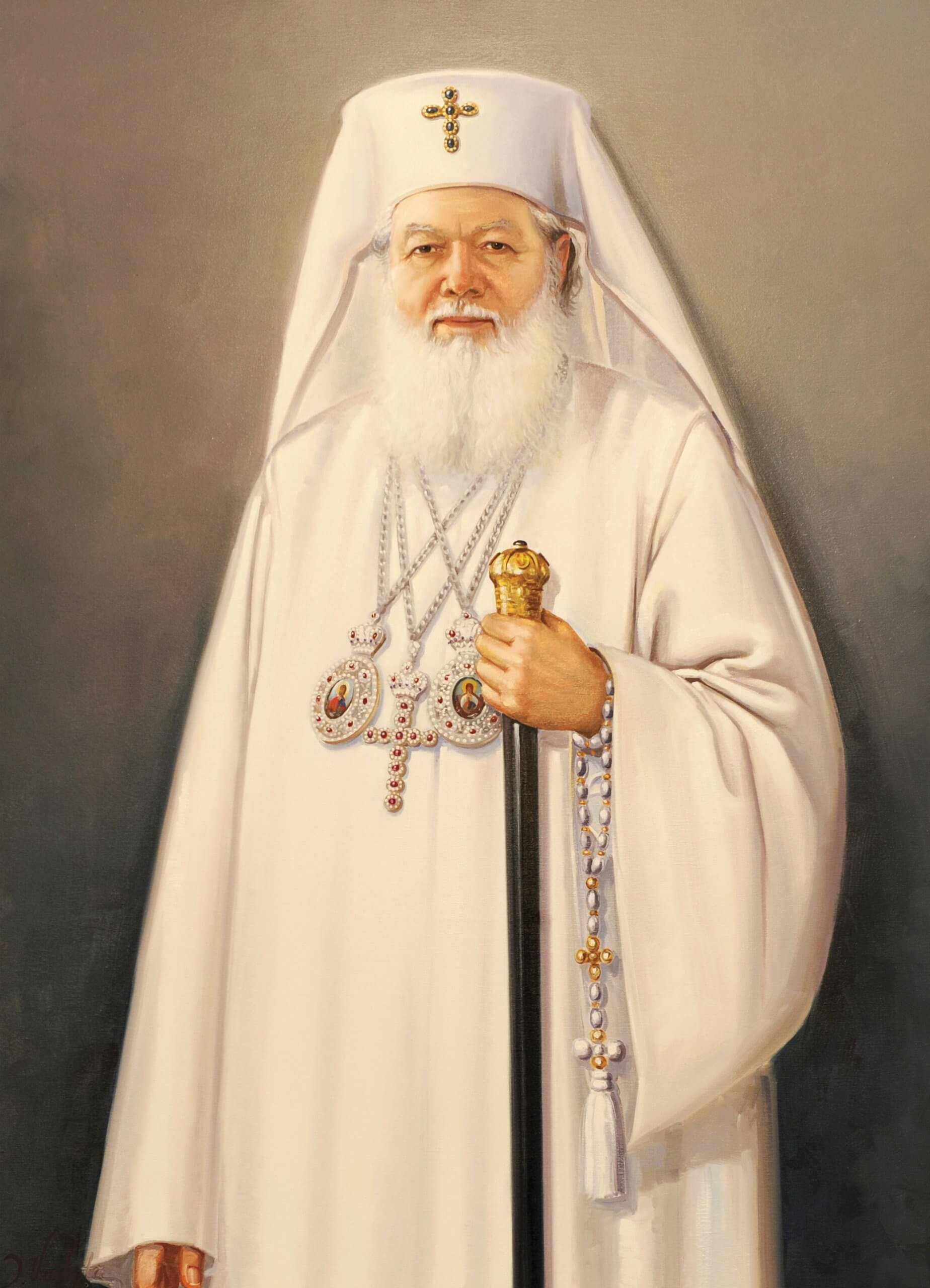Patriarchs of Romania
Patriarch Teoctist Arăpașu
His Beatitude Patriarch Teoctist will always remain in the minds and hearts of all those who knew and admired his bright countenance and his kindness of soul. Like any kind-hearted and wise Romanian, our Patriarch had a natural and beautiful openness to dialog and cooperation with sister Churches and other Christian denominations. In this sense, the Arch-Pastor of Orthodox Romanians was continuing the ecumenical tradition of Romanian Orthodoxy, which avoids both isolation and dissolution of our identity.

Life and work
He was born on 7 February 1915, in Tocileni, Botoșani County, into a pious family, being the tenth of eleven children. At baptism, he received the name Teodor. After finishing primary school in his native village, he entered monastic life as a brother at Vorona Monastery (1928) and later at Neamț Monastery (1931). From 1932 to 1940, he studied at the Cernica Monastery Seminary. In 1935, he was tonsured a monk at Bistrița Monastery, Neamț County, receiving the name Teoctist, and two years later, he was ordained a hierodeacon. Between 1940 and 1945, he attended the Faculty of Orthodox Theology in Bucharest. After completing his undergraduate studies, he was ordained a hieromonk in Iași (March 1, 1945), and a year later, he was elevated to the rank of archimandrite. Between 1945 and 1947, he also attended courses at the Faculty of Letters and Philosophy in Iași. Over time, he served as the great ecclesiarch of the Metropolitan Cathedral in Iași, exarch of the monasteries in the Archdiocese of Iași (1946–1948), and administrative vicar of the same diocese (1948–1950). In 1950, he was elected Patriarchal Vicar Bishop with the title “Botoșăneanul.” During this period, he served as Secretary of the Holy Synod and Rector of the Theological Institute in Bucharest (1950–1954). On July 28, 1962, he was elected Bishop of Arad, and ten years later, on January 28, 1973, he became Archbishop of Craiova and Metropolitan of Oltenia. On September 25, 1977, he was elected Archbishop of Iași and Metropolitan of Moldavia and Bukovina. On November 9, 1986, he was elected Patriarch of the Romanian Orthodox Church. He passed away on July 30, 2007, after 57 years of service as a hierarch.
During his patriarchal ministry, he participated in the meetings of the World Council of Churches and the Second Pan-Orthodox Pre-Synodal Conference. He reorganized social assistance in the Romanian Patriarchate and supported the creation of new Christian-Orthodox associations (ASCOR, LTCOR). With his blessing, several Romanian saints were canonized. He promoted the reintroduction of religious education in public schools. He supported the establishment of new dioceses abroad (the Metropolis of Germany, the Diocese of Hungary, the Diocese of Dacia Felix – Serbia, the Diocese of Italy) and made pastoral visits to Romanian Orthodox communities in Austria, Hungary, the USA, and Canada.
He completed the new Church Objects Workshops at Popești-Leordeni, where he also founded the “Duminica Sfinților Români” Monastery. He welcomed Pope John Paul II to the Romanian Patriarchate (May 7–9, 1999), the first visit of a pope to a majority-Orthodox country. He was also received by the same pope at the Vatican in October 2002. In recognition of his remarkable merits, the Romanian Academy awarded him the title of Honorary Member on December 17, 1990. He revived the idea of building the People’s Salvation Cathedral, managing to secure the necessary land—11 hectares—on Arsenal Hill in Bucharest (O.U.G. 19/2005 and Law 261/2005).
Works
In his 57 years of activity as a hierarch, he published numerous articles and studies in specialised journals, as well as volumes, among which one can mention: În slujba ortodoxiei românești, a năzuințelor de unitate națională și de afirmare a culturii române: Mitropolitul Iacob Putneanul, 1719-1778 (Neamț, 1978); Pe treptele slujirii creștine, in 15 volumes comprising homilies, speeches and meditations; Slujind altarul străbun (Bucharest, 1992); Sfinți români și apărători ai legii strămoșești(Bucharest, 1987); Biserica Ortodoxă Ortodoxă Română. Monografie album (Bucharest, 1987).
Eulogy
“His Beatitude Patriarch Teoctist will forever remain in the minds and hearts of all those who knew him and admired his bright countenance and his kindness of soul. Like any good-hearted and wise Romanian, our Patriarch had a natural and beautiful openness toward dialogue and cooperation with sister Churches and other Christian denominations. In this respect, the spiritual leader of the Romanian Orthodox faithful continued the ecumenical tradition of Romanian Orthodoxy, which avoids both isolation and the dilution of our identity. As such, our Patriarch Teoctist actively promoted interconfessional and interreligious dialogue on both national and international levels. The most eloquent expression of this spirit of mutual respect and ecumenical dialogue was the visit of Pope John Paul II to Bucharest on May 7–9, 1999, followed by Patriarch Teoctist’s visit to Rome in October 2002”.
His Beatitude Daniel,
Patriarch of the Romanian Orthodox Church